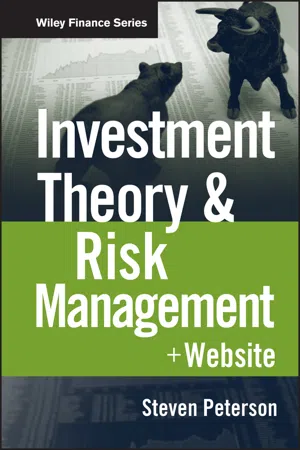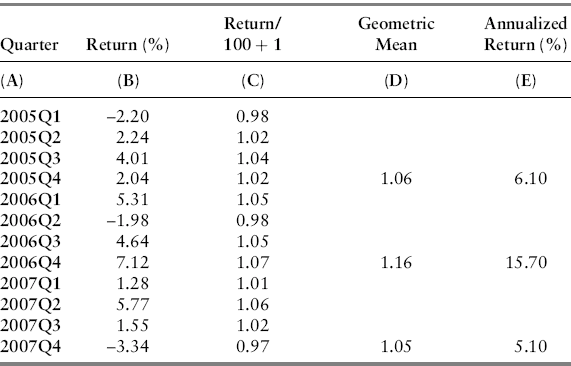
- English
- ePUB (mobile friendly)
- Available on iOS & Android
Investment Theory and Risk Management
About this book
A unique perspective on applied investment theory and risk management from the Senior Risk Officer of a major pension fund
Investment Theory and Risk Management is a practical guide to today's investment environment. The book's sophisticated quantitative methods are examined by an author who uses these methods at the Virginia Retirement System and teaches them at the Virginia Commonwealth University. In addition to showing how investment performance can be evaluated, using Jensen's Alpha, Sharpe's Ratio, and DDM, he delves into four types of optimal portfolios (one that is fully invested, one with targeted returns, another with no short sales, and one with capped investment allocations).
In addition, the book provides valuable insights on risk, and topics such as anomalies, factor models, and active portfolio management. Other chapters focus on private equity, structured credit, optimal rebalancing, data problems, and Monte Carlo simulation.
- Contains investment theory and risk management spreadsheet models based on the author's own real-world experience with stock, bonds, and alternative assets
- Offers a down-to-earth guide that can be used on a daily basis for making common financial decisions with a new level of quantitative sophistication and rigor
- Written by the Director of Research and Senior Risk Officer for the Virginia Retirement System and an Associate Professor at Virginia Commonwealth University's School of Business
Investment Theory and Risk Management empowers both the technical and non-technical reader with the essential knowledge necessary to understand and manage risks in any corporate or economic environment.
Frequently asked questions
- Essential is ideal for learners and professionals who enjoy exploring a wide range of subjects. Access the Essential Library with 800,000+ trusted titles and best-sellers across business, personal growth, and the humanities. Includes unlimited reading time and Standard Read Aloud voice.
- Complete: Perfect for advanced learners and researchers needing full, unrestricted access. Unlock 1.4M+ books across hundreds of subjects, including academic and specialized titles. The Complete Plan also includes advanced features like Premium Read Aloud and Research Assistant.
Please note we cannot support devices running on iOS 13 and Android 7 or earlier. Learn more about using the app.
Information
Estimating Returns

















| Date | Return (%) |
| 2005Q1 | –2.20 |
| 2005Q2 | 2.24 |
| 2005Q3 | 4.01 |
| 2005Q4 | 2.04 |
| 2006Q1 | 5.31 |
| 2006Q2 | –1.98 |
| 2006Q3 | 4.64 |
| 2006Q4 | 7.12 |
| 2007Q1 | 1.28 |
| 2007Q2 | 5.77 |
| 2007Q3 | 1.55 |
| 2007Q4 | –3.34 |







Table of contents
- Cover
- Series Page
- Title Page
- Copyright
- Dedication
- Preface
- Acknowledgments
- Chapter 1: Discount Rates and Returns
- Chapter 2: Fixed Income Securities
- Chapter 3: Term Structure
- Chapter 4: Equity
- Chapter 5: Portfolio Construction
- Chapter 6: Optimal Portfolios
- Chapter 7: Data and Applications
- Chapter 8: Anomalies
- Chapter 9: Factor Models
- Chapter 10: Active Portfolio Management
- Chapter 11: Risk
- Chapter 12: Monte Carlo Methods
- Chapter 13: Systemic Risk
- Chapter 14: Incorporating Subjective Views
- Chapter 15: Futures, Forwards, and Swaps
- Chapter 16: Introduction to Options
- Chapter 17: Models of Stock Price Dynamics
- Chapter 18: Hedging Portfolio Risk
- Chapter 19: Private Equity
- Chapter 20: Structured Credit
- Chapter 21: Optimal Rebalancing
- Chapter 22: Data Problems
- About the Author
- Index